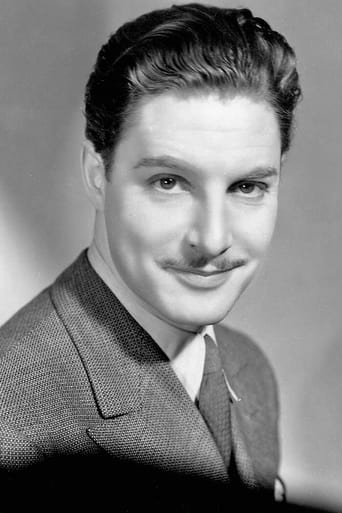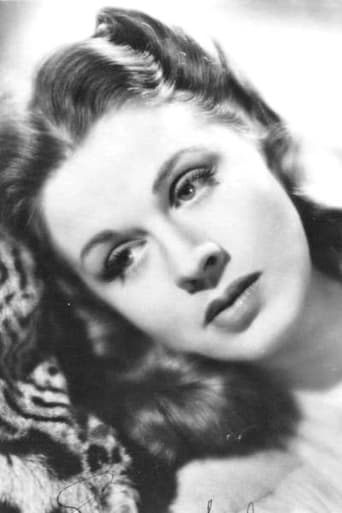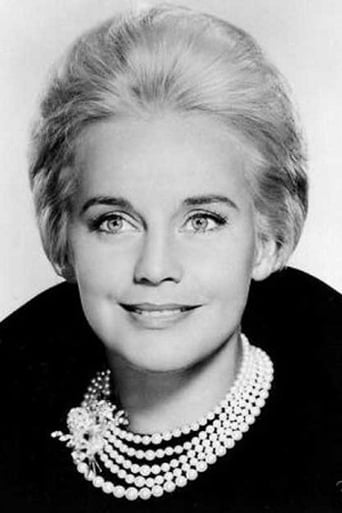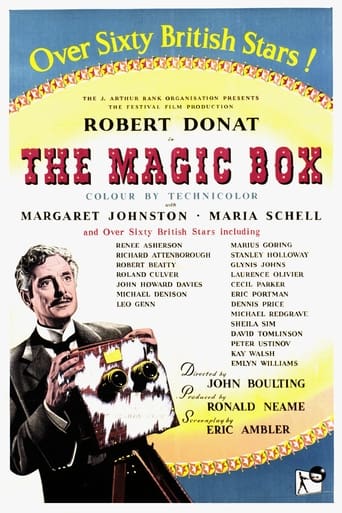
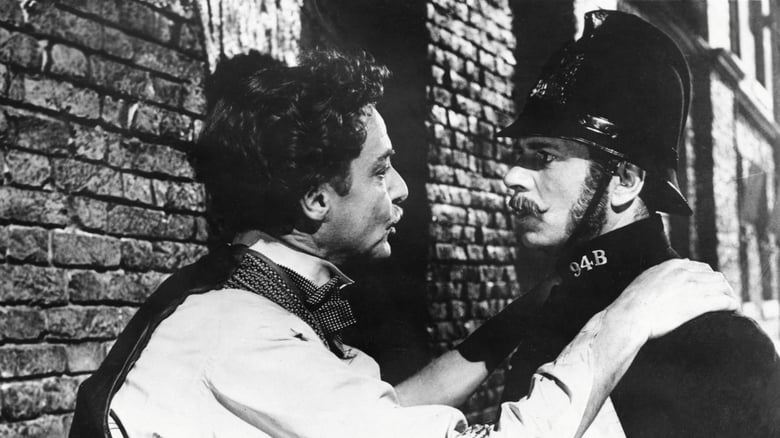
The Magic Box (1952)
Now old, ill, poor, and largely forgotten, William Freise-Greene was once very different. As young and handsome William Green he changed his name to include his first wife's so that it sounded more impressive for the photographic portrait work he was so good at. But he was also an inventor and his search for a way to project moving pictures became an obsession that ultimately changed the life of all those he loved.
Watch Trailer
Cast


Reviews
THE MAGIC BOX is a 1951 biopic from the Boulting Brothers. The subject of the film is William Friese-Greene, a man whose invention of a moving-picture format saw him contributing to the development of early cinema, although he is very much a forgotten figure today. As such, this film is surprisingly downbeat and plays out as a tragedy at times. It's very realistic, harshly so, in fact, and details poverty, oppression, and the impact of turgid real life on one man's dreams. However, a succession of endless cameos from about half of all the famous faces of the era keeps it watchable, and Robert Donat - of THE 39 STEPS fame - delivers a winning performance as the protagonist.
For the first time in my life I was recently married, 23 and unemployed. My wife was working and I was home watching TV. A British movie came on, The Magic Box which caught my interest immediately . The frustrating life of film innovator William Freese Greene (Robert Donat). The real inventor of color motion pictures. Yes there will be debates that will go on for a time about who invented the motion picture projector and who put in the patents first. But the 100 percent perspiration and dedication of one man shines throughout this movie. Despite bouts with money and marriage problems our inventor chap continued to persevere in his quest for a beautiful finished product. Earlier I watched the original Good Bye Mister Chips starring Robert Donat in the lead. What paralleled these two pictures was the similarity of Robert Donat playing different ages throughout the picture. As in the film Mister Chips you see Donat as a young Freshman Professor at a boarding school and as the film wears on he ages well into his early eighties. In this movie Donat starts as an elderly man at a London conference and the film flashes back showing a younger spry apprentice photographer. Our movie starts with the fore mentioned conference with the older Greene speaking to fellow businessmen in the film industry. Greene's stands up frustrated as he wants to make his message about the innovations of filming but the crowd was saturated with money hungry businessmen interested in complacency. Silent black and white movies being the norm rather than technical advances stressed by Greene. The response from his peers was complacent at the very least. Greene sits himself down and ponders his past. Greene's story flashed back in time as a young studio portrait photographer for a man called Maurice Guttenberg (Frederick Valk). Guttenberg and Greene have a falling out. Greene insists on shooting a picture his way. Greene and his new bride venture out on their own. Green opens his own photography business and slowly makes a solid customer base. With the money and the help of businessman, he invests it all on developing a color film with quite a few failures along the way but persistence pays off as he finally develops a celluloid that could handle a movie projector. One night Greene sets up his makeshift projector. Greene is excited about a scene he filmed in Hyde Park earlier in the day. Greene is about to run the film but there's no audience. He calls down to the street where a Bobby is walking his beat.The Bobby is played by the exemplary Actor Sir Laurence Olivier. Greene tells the befuddled Officer to sit and watch the bed sheet on the wall. Greene runs the film to the amazement of the confused constable as he runs to the sheet and tries to grab the images. This movie has so many cameos of Iconic British cinema actors. Here are some familiars, Leo Genn, David Tomlinson, Peter Ustinov and Michael Redgrave. I always like the acting of Robert Donat and his soft spoken approach. When this movie was released it was a box office flop but to me it was informative and poignant.
There were undoubtedly many people working on some of our most important inventions around the time they became prominent. William Friese-Greene spent his life working on the motion picture camera, and though he isn't the official inventor, he is someone who contributed his work to what became the final product. His story is told by an all-star cast (even in tiny roles) in 1951's "The Magic Box" starring Robert Donat and Maria Schell.Greene held the first patent on a motion picture camera, and financial problems, by which he was beset his entire life, caused him to sell his patent for 500 pounds. He also created a "Biocolor" system which won in a lawsuit against a system called Kinemacolor. This early color process was too expensive for commercial use, however.From what I can gather, Greene had good ideas that weren't very practical, and the film is basically about how he went from a highly successful photographer to a bankrupt inventor, and how his obsession with film and color controlled his life. Not mentioned is the fact that his son Claude Friese-Greene became a cinematographer and was very prolific in British films until his death in 1943. He continued to develop his father's color process and produced a series of travelogues in the 1920s using this system.Robert Donat is excellent, but the film is not very interesting except to spot all of the huge British stars in minor roles, such as Laurence Olivier as a bobby.Some people are fairly dismissive of Friese-Greene, and his place in the creation of the moving picture is controversial. There's no question that today he is considered an early pioneer in moving pictures and in working with color. He was in touch with Edison regarding his work, and just because the credit goes to the individual who makes a product commercial is no reason to ignore the work of others. If this film makes people aware that a credited inventor isn't always the only inventor, so be it.
This is the 1951 feature made by the British film industry to celebrate the festival of Britain. The film stars a virtual who's who of all the famous British cinema actors of that time, and one of the fun things about this film is trying to identify all of them as they pop up in various cameo roles. The story is the biography of William Friese- Greene, who this film claims invented the motion picture camera and projector. Edison and Lumiere are casually acknowledged as also being motion picture pioneers, but Friese-Greene is claimed to have had the first intermittent mechanism (presumably the Maltese cross) used in today's cinema projectors. It also claims that he invented the biocolour process, where color motion pictures are produced by rotating two color filters in front of the camera and projector (KinemaColour). The lead role is beautifully played by Robert Donat as the quiet intense inventor obsessed with producing moving photographs, and his wife is competently played by Maria Schell. Also appearing in cameo roles are Michael Redgrave, Richard Attenborough, Peter Ustinov, Stanley Holloway, Michael Dennison, the great Dennis Price, the beautiful Glynnis Johns and her father Mervyn Johns, the eccentric Joyce Grenfell, the wonderful Margeret Rutherford, and a host of others too long to mention. The most famous cameo is by Sir Laurence Olivier, as the astonished policeman who witnesses Friese-Greene's first triumph, the projection of moving images of Hyde Park on an improvised sheet screen. This is the most remembered scene of the film, and Friese Greene's excitement at this event reminded me of my own excitement when I first turned the handle on my first Pathescope 9.5mm projector! The film is of great interest to film collectors and movie buffs, containing beautiful shots of old wood and brass magic lanterns and early movie equipment. There are many wonderful scenes, such as the Victorian photo studio where they show customers having to stand absolutely still for 30 seconds to get their photo taken! The film was produced by Roy Boulting, and the beautiful Victorian settings and costumes are sumptuously photographed by Jack Cardiff. My family and friends really enjoyed this movie, it is low key almost like a BBC period drama, but if you are a film collector you will love it. We take the showing of films in our homes for granted these days, and it easy to forget the real struggle by inventors such as Friese- Greene to achieve what seemed impossible at the time. American audiences will of course have to (at least temporarily) suspend their belief that Edison was the sole inventor of the motion picture camera ( in fact Edison was primarily a business man and entrepreneur who copied many of the motion picture concepts developed by Lumiere in France) This film is very rare indeed. I don't think it exists on VHS or DVD,(certainly not in the USA), however Super 8mm film prints do exist, so if you find an S8 print grab it! My particular super 8 print is a 2400 ft Agfa color print, pin sharp with beautiful rich colors and great contrast. The mono magnetic track sound quality is very good for a film of 1951 vintage. Highly recommended, if you can find it.


